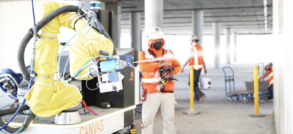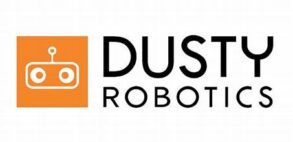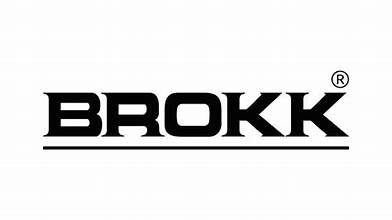
The field of robotics within the AEC industry has witnessed a significant increase in growth, offering a wide range of solutions for stakeholders to choose from. Though use of robotics in 2024 is not widespread, early adopters are seeing impacts in safety, efficiency, precision, accuracy and cost savings. This article highlights five robotics companies, each offering unique solutions to different areas of the construction industry.
BuiltWorlds' research identifies most robotic solutions within the AEC industry falling in one of four main areas:
- Autonomous vehicles/Heavy equipment: Construction companies are integrating more autonomous machinery and equipment to perform tasks with precision, and increase safety and efficiency. Advancements in sensor technologies, AI, and connectivity are driving this market forward.
- Demolition robotics: This category includes solutions that are making the demolition process safer, more efficient, and more accurate. They reduce the need for manual labor in high-risk environments and offer advantages such as faster project completion and access to confined spaces. As construction firms prioritize safety and sustainability, the demand for demolition robotics is anticipated to grow, driving innovation and competition among manufacturers.
- Monitoring robotics: Monitoring robotics include autonomous solutions used for site progress monitoring, laser scanning, remote access, and drone usage. These robots are equipped with sensors and cameras to monitor and collect data on construction progress, safety compliance, and environmental conditions. The purpose of these robotics is to enhance efficiency, safety, and accuracy in monitoring activities within the AEC sector.
- Service/labor robotics: Includes solutions such as autonomous machines for material placement and movement, which are becoming more prevalent in the industry. These robots are employed to support human labor in tasks like heavy lifting, material handling, and repetitive activities. These technological solutions not only enhance efficiency and reduce the physical strain on workers but also address safety concerns by performing hazardous or strenuous tasks. The need for labor robotics in construction has risen due to the necessity for better construction site safety, shorter project timelines, and the optimization of labor resources.
Does your company use a robotic solution?
Share some insights in our Tools, Equipment and Robotics Survey.

Canvas uses machine learning to install drywall at construction sites, all delivered with unmatched quality, speed, and precise work. By putting robots in the hands of skilled workers, project outcomes will begin to work in a much more efficient and effective way.
“We've been very careful and focused on really keeping [the robotics technology] in the hands of workers and rolling out the more autonomous features very, very slowly. So, right now, when you operate our machines, it's the worker that's driving them from work space to work space. It's not driving itself and we're making sure we get enough testing in on that feature before we let it do wall-level driving on its own. We've also spent time making sure that we have what are called no-go zones that the operators can program so that, no matter what happens, it'll never hit a sprinkler or something overhead and do some damage…We've spent a lot of time making sure it has the right levels of intelligence to be safe and I think that's where we focus our intelligence a lot on how to get the work done better and how to be safe as opposed to necessarily, starting with automating everything.” Kevin Albert, Founder and CEO of Canvas

KEWAZO integrates robotic platforms on-site to facilitate digital services in a streamlined manner. They designed a robotic hoist system, named LIFTBOT, that uses their data analytics platform to serve as a solution within scaffolding. According to KEWAZO, there has been between 40-70 percent of saved labor costs within over 28 projects and tests that use LIFTBOT.

Dusty Robotics provides robot-powered tools in hopes of increasing strong solutions within the digital transformation of the AEC industry. With digital automation tools, a building's lifecycle becomes more efficient and cost effective, while also reducing waste. Dusty, the company’s robot, has the ability to print a site outline on the actual floor of the building project, all within a 1/16th of an inch precision.
“Dusty is starting to print QR codes on job sites. These QR codes will link a particular location in the physical world to online resources in the digital world. For example, imagine you're standing on a flat slab on concrete, and you scan a code, and it brings up the 3D virtual model of this apartment up on your tablet. Or you can view the punch list for this cleanroom directly on your phone. The possibilities are endless, and it'll all be enabled by automated layout.” Tessa Lau, CEO and Co-founder of Dusty Robotics

Brokk is a supplier of demolition robots that has been working in demolition robot technology, design, and manufacturing for over 40 years. Brokk's range of demolition robots can be used as an alternative to traditional demolition methods, providing greater flexibility and more efficient work in confined spaces. Brokk's three-part arm system provides this flexibility and reach, and the robotic machines can be equipped with a variety of additional attachements. Additionally, the robots are controlled remotely, enabling safer working environments on site.

Fast Brick Robotics' Hadrian X is a robotic blocklaying machine and system, capable of safely working outdoors in uncontrolled environments with speed and accuracy. It builds block structures from a 3D CAD model, producing less waste than traditional construction methods while greatly improving site safety. Hadrian X uses FBR's Dynamic Stabilization Technology (DST) to work with precision in outdoor environments. DST works by adjusting the position of a robot's end effector to ensure it is held with stability in place, allowing robots to work effectively outdoors in unstable and unpredictable environments.




Discussion
Be the first to leave a comment.
You must be a member of the BuiltWorlds community to join the discussion.